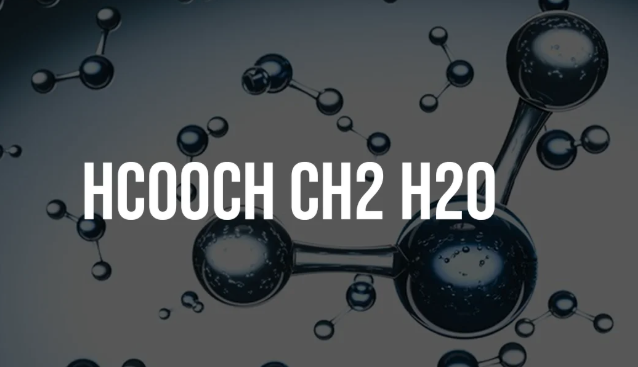The notation HCOOH CH₂ H₂O typically represents a system involving formic acid (HCOOH), methylene (CH₂), and water (H₂O). This combination is significant in various chemical reactions and industrial applications.
Chemical Interactions
In aqueous solutions, formic acid (HCOOH) can dissociate to produce formate ions (HCOO⁻) and hydronium ions (H₃O⁺), as shown in the reaction:
HCOOH(aq) + H₂O(l) ⇌ HCOO⁻(aq) + H₃O⁺(aq)
Methylene (CH₂) groups, often present in organic compounds, can participate in various reactions, including
- Hydration/Dehydration: Water can add to or remove from unsaturated CH₂-containing species, mediated by the acidity of formic acid
- Redox Reactions: Formic acid can serve as a hydrogen donor, reducing metal catalysts or organic substrates under mild conditions
- Condensation Reactions: CH₂ bridges can link with carbonyl groups to form α-hydroxy or α-alkoxy derivatives, especially in aqueous media.
These interactions make HCOOH CH₂ H₂O systems versatile in chemical synthesis and industrial processes.
Industrial Applications
- Textile Processing: Formic acid-water blends help fix dyes onto fibers. CH₂ linkers in oligomers improve color fastness, leveraging HCOOH chemistry for vibrant fabrics
- Rubber Production: Acidic water suspensions coagulate latex. Incorporating methylene derivatives adjusts polymer cross-link density, enhancing elasticity.
- Formic Acid Fuel Cells: In emerging energy devices, HCOOH acts as a safe hydrogen reservoir—formic acid releases protons and electrons, CH₂ fragments tune membrane compatibility, and water manages heat and proton conduction.
These processes highlight HCOOH’s role in eco-friendly manufacturing and renewable energy.
Laboratory Significance
In laboratory settings, HCOOH CH₂ H₂O mixtures often serve as a reaction medium. For instance, formic acid in water is used for dissolving metal ions, while CH₂-containing species modify the reaction pathway or speed. These combinations are valuable in organic synthesis, catalysis, and material science.
Environmental and Safety Considerations
- Handling Formic Acid: Formic acid is corrosive and must be handled with care. In any system involving HCOOH CH₂ H₂O, safety protocols include proper ventilation, protective gear, and neutralizing agents for spills.
- Waste Management: Reactions involving HCOOH CH₂ H₂O may produce volatile organic compounds (VOCs). Disposal of byproducts should comply with environmental regulations to prevent water and air pollution.
Future Research Directions
With the rise of green chemistry, researchers are examining HCOOH CH₂ H₂O systems for sustainable processes. For example:
- Bio-based Synthesis: Using biomass-derived formic acid and methanol.
- Catalytic Efficiency: Developing catalysts that leverage this trio for faster, cleaner reactions
- Alternative Fuels: Expanding the use of formic acid-water solutions in portable fuel cells.
These innovations aim to reduce reliance on harmful solvents and promote environmentally friendly chemical processes.
If you have specific questions about reactions involving HCOOH, CH₂, and H₂O, or their applications in particular industries or research fields, feel free to ask!

